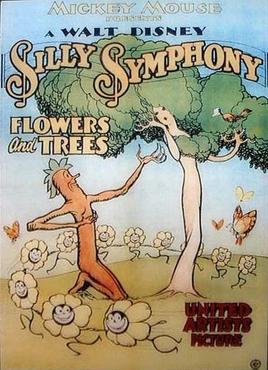The Walt Disney Company, commonly known as Disney, is an American diversified multinational mass media corporation headquartered at the Walt Disney Studios in Burbank, California. It is the largest media conglomerate in the world in terms of revenue. Disney was founded on October 16, 1923, by Walt Disney and Roy O. Disney as the Disney Brothers Cartoon Studio, and established itself as a leader in the American animation industry before diversifying into live-action film production, television, and theme parks. The company also operated under the names Walt Disney Studio and Walt Disney Productions.
The company is best known for the products of its film studio, the Walt Disney Studios, which is today one of the largest and best-known studios in Hollywood


In early 1923, Kansas City, Missouri animator Walt Disney created a short film entitled Alice's Wonderland, which featured child actress Virginia Davis interacting with animated characters. After the bankruptcy in 1923 of his previous firm, Laugh-O-Gram Films, Disney moved to Hollywood to join his brother Roy O. Disney. Film distributor Margaret J. Winkler of M.J. Winkler Productions contacted Disney with plans to distribute a whole series of Alice Comedies purchased for $1,500 per reel with Disney as a production partner. Walt and his brother Roy Disney formed Disney Brothers Cartoon Studio that same year. More animated films followed after Alice.
After the demise of the Alice comedies, Disney developed an all-cartoon series starring his first original character, Oswald the Lucky Rabbit,which was distributed by Winkler Pictures through Universal Pictures

which was distributed by Winkler Pictures through Universal Pictures. The distributor owned Oswald, so Disney only made a few hundred dollars. Disney only completed 26 Oswald shorts before losing the contract in February 1928, when Winkler's husband Charles Mintz took over their distribution company. After failing to take over the Disney Studio, Mintz hired away four of Disney's primary animators (the exception being Ub Iwerks) to start his own animation studio, Snappy Comedies.
In 1928, to recover from the loss of Oswald the Lucky Rabbit, Disney came up with the idea of a mouse character named Mortimer while on a train headed to California drawing up a few simple drawings. The mouse was later renamed Mickey Mouse and starred in several Disney produced films. Ub Iwerks refined Disney's initial design of Mickey Mouse. Disney's first sound film Steamboat Willie, a cartoon starring Mickey, was released on November 18, 1928 through Pat Powers' distribution company. It was the first Mickey Mouse sound cartoon released, but the third to be created, behind Plane Crazy and The Gallopin' Gaucho.
Disney continued to produce cartoons with Mickey Mouse and other characters, and began the Silly Symphonies series with Columbia Pictures signing on as Symphonies distributor in August 1929.
The studio continued releasing animated shorts and features, such as Pinocchio (1940), Fantasia (1940), Dumbo (1941), and Bambi (1942).After World War II began, box-office profits declined. When the United States entered the war after the attack on Pearl Harbor, many of Disney's animators were drafted into the armed forces. The U.S. and Canadian governments commissioned the studio to produce training and propaganda films. By 1942 90% of its 550 employees were working on war-related films. Films such as the feature Victory Through Air Power and the short Education for Death (both 1943) were meant to increase public support for the war effort. Even the studio's characters joined the effort, as Donald Duck appeared in a number of comical propaganda shorts, including the Academy Award-winning Der Fuehrer's Face (1943).
The release of Cinderella in 1950 proved that feature-length animation could still succeed in the marketplace. Other releases of the period included Alice in Wonderland (1951) and Peter Pan (1953), both in production before the war began, and Disney's first all-live action feature, Treasure Island (1950). Other early all-live-action Disney films included The Story of Robin Hood and His Merrie Men (1952), The Sword and the Rose (1953), and 20,000 Leagues Under the Sea (1954). Disney ended its distribution contract with RKO in 1953, forming its own distribution arm, Buena Vista Distribution
In December 1950, Walt Disney Productions and The Coca-Cola Company teamed up for Disney's first venture into television, the NBC television network special An Hour in Wonderland. In October 1954, the ABC network launched Disney's first regular television series, Disneyland, which would go on to become one of the longest-running primetime series of all time. Disneyland allowed Disney a platform to introduce new projects and broadcast older ones, and ABC became Disney's partner in the financing and development of Disney's next venture, located in the middle of an orange grove near Anaheim, California. It was the first phase of a long corporate relationship which, although no one could have anticipated it at the time, would culminate four decades later in the Disney company's acquisition of the ABC network, its owned and operated stations, and its numerous cable and publishing ventures.




No comments:
Post a Comment